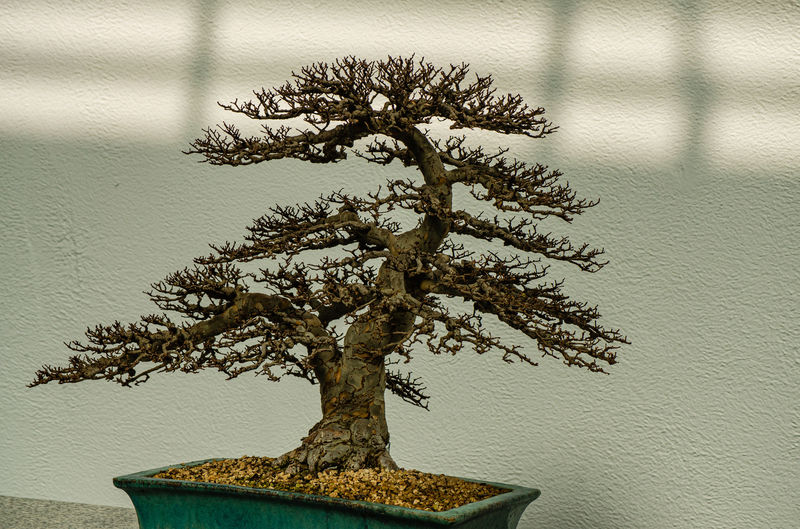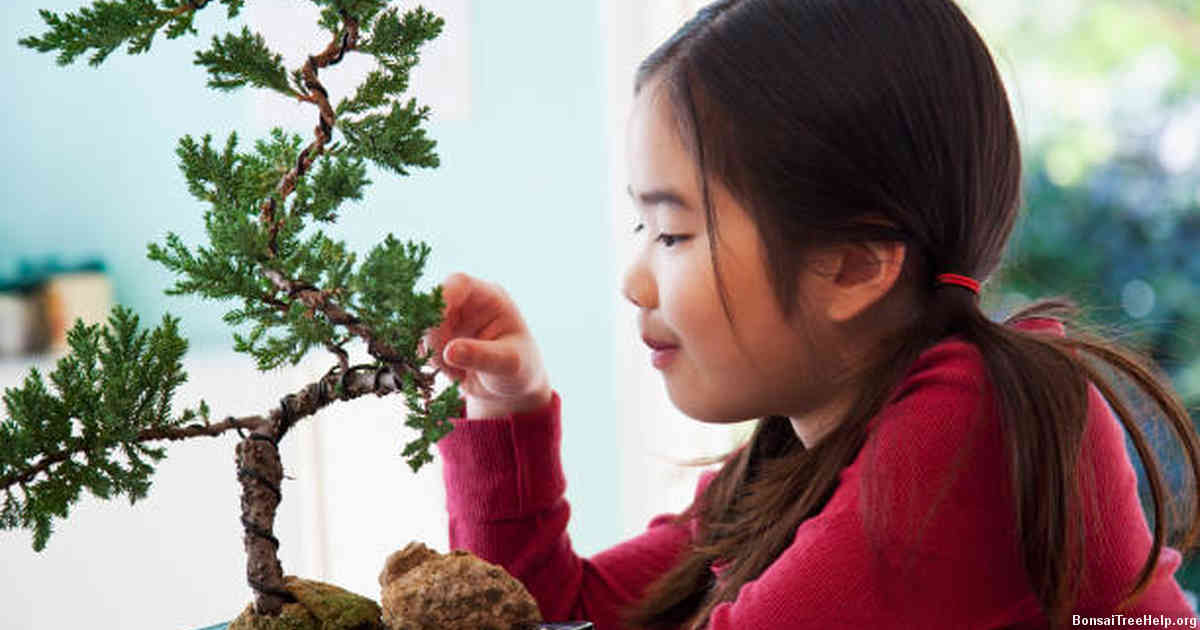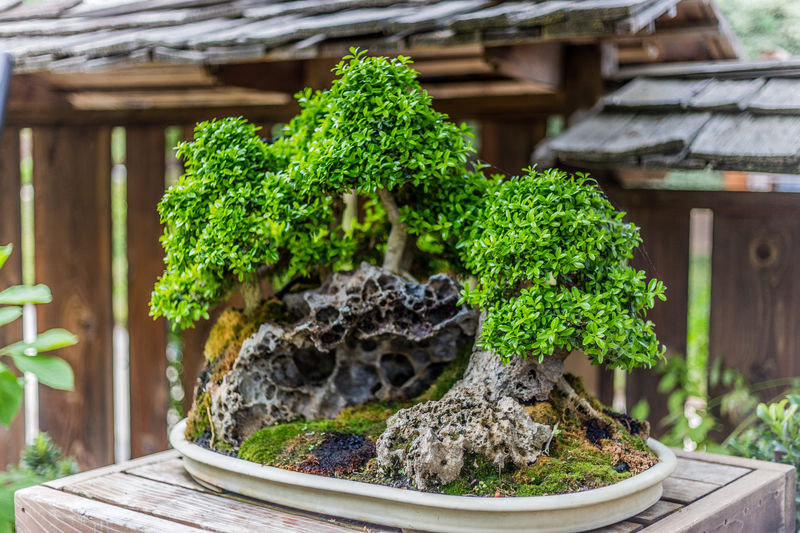
Yes, a bonsai tree is real. It is a form of art that involves the growth and shaping of trees into miniature versions of their larger counterparts. This art has been practiced for thousands of years in countries all around the world, primarily China, Japan and other East Asian cultures. Bonsai trees are living plants that require regular care to keep them healthy and well-shaped. Watering, pruning, fertilizing and repotting are essential elements to keeping a bonsai tree alive and thriving. While it may not be suitable for everyone as they can take time to grow properly, a bonsai tree can be an interesting addition to any home or garden.
Contents:
What is a Bonsai Tree?

A bonsai tree is an art form that creates miniature versions of trees and other woody plants. The goal of this practice is to cultivate a small, aesthetically pleasing representation of a larger tree or shrub, manipulating it into an idealized version using techniques such as pruning, root reduction, grafting, potting and wiring. This specialized horticultural technique has been used in Japan for centuries, though its popularity has spread around the world today.
Bonsai trees are grown in shallow containers and sometimes placed on stands or trays in order to showcase their beauty. They may vary greatly in size; some can fit on the palm of your hand while others are large enough to fill up a room. The use of pruning shears and scissors help shape the plant’s branches, leaves and trunk into attractive forms reminiscent of larger trees seen in nature. Temperature control indoors can be used to recreate different seasons and climates within the same container for greater visual impact.
The main challenge with cultivating bonsai is creating balance between keeping them healthy while also maintaining their desired appearance. Constant monitoring of soil fertility levels through regular fertilization is needed as well as ongoing trimming throughout their growth cycles so they don’t grow too tall or wide for the space available in their pots.
Types of Bonsai Trees

When it comes to a real bonsai tree, there are many varieties and species that can be chosen. Each type offers something unique and exciting to consider when looking for the perfect tree. One of the more popular choices is the juniper bonsai, which thrives in cool climates and prefers lots of light. Its beautiful shape, vibrant green needles, and ease of training make it an ideal choice for beginners or experts alike. Another option is a ficus bonsai with its glossy leaves, stunning trunk patterns, and versatile growth habits which allow for both indoor and outdoor growing.
More unusual types include the Korean Hornbeam Bonsai with its rare yellow flowers in springtime or wintergreen bonsais whose distinctive berries turn from white to black as they ripen on this low-growing shrub. Crape myrtles are prized for their elegant cascading branches while weeping figs provide an eye-catching showpiece all year long. With so many options available, there is certain to be something that fits any style garden or décor theme you have in mind.
People looking for a truly one-of-a-kind bonsai experience may opt for collecting wild specimens from local gardens or forests if they are allowed in those areas according to local laws. These trees will require special care but offer a unique specimen no one else has that could become quite extraordinary with time.
Caring for Bonsai Trees

Caring for bonsai trees is an essential part of having one. While their miniature size can make them seem to be almost maintenance-free, they are actually quite delicate and require special attention in order to thrive. It’s important to keep the bonsai tree watered properly and prune it regularly, otherwise its health will suffer.
Good soil is also an essential element when caring for a bonsai tree; quality dirt mixed with sand or gravel helps retain moisture and improve drainage. If desired, some fertilizer can be added once per season to support the plant’s growth. Bonsais also need plenty of sunlight, but too much direct exposure can be detrimental, so positioning it strategically near a window or outdoors on a patio is ideal.
When it comes time for winter care of your bonsai, you should bring it inside if temperatures drop below 50 degrees Fahrenheit during this time; the warmth of your home should help prevent any damage from cold weather exposure. Remember that just like full-size plants and trees, pests can sometimes become problematic–it’s important to inspect yours often and address any issues right away with appropriate treatments so that your miniature oasis remains healthy and beautiful.
Creating a Bonsai Tree from Scratch

With proper time and dedication, you can create your own bonsai tree from scratch. To do this, you must have a healthy cutting of a real tree that should be between two to four inches in length. Depending on the species, it is essential to ensure the correct environment and specific care methods are used to cultivate the bonsai plant properly.
Once you have selected the species, prepare your soil mix with an equal ratio of peat moss and perlite or similar material such as turface or pumice. If necessary, some sand can also be added for better drainage; however avoid using garden soil as it compacts easily and won’t provide ideal water drainage for your bonsai tree. After creating a potting space in a tray with slits, place your cuttings inside – making sure they are firmly held in place by burying them slightly under the surface – then use masking tape to secure everything together until new roots start forming around it which usually takes one to three weeks.
Once you see signs of growth increase (such as larger leaves), gradually begin trimming excess branches from both sides before wiring them into desired shapes so that when these areas callus over fully – set and fixed into those positions-a vibrant new bonsai will form within weeks. Feeding is important too: during summer months give nutrient rich fertilizer every three weeks while once winter arrives feeding can be done just two times but with stronger compost mixes blended for bonsais specifically like liquid seaweed extract fertilizer which helps boost growth even further.
Bonsai Tree Myths and Misconceptions

Bonsai trees have long been a source of fascination, conjuring up images of picturesque miniaturized trees in carefully crafted containers. However, these miniature versions are often misunderstood and misrepresented in popular culture. For example, some people believe that bonsai trees are genetically modified or altered species, when in fact they are made from normal full-sized plants that have been pruned and trained to remain small through a variety of techniques.
Misconceptions about bonsai also extend to the amount of time required for proper cultivation. While it is true that managing a bonsai tree takes more effort than caring for most indoor plants, it is not necessary to constantly trim and groom them every day. A skilled practitioner can provide care with minimal efforts while still creating masterpieces that would be out of reach otherwise. Creating beautiful bonsais does not require expensive tools – many practitioners create works with simple everyday items like scissors and rakes.
Despite their seemingly exotic origin, bonsai trees can actually be grown relatively easily by anyone who wishes to take the time to do so. With patience and practice even novice gardeners may find themselves able to cultivate impressive specimens without ever leaving their home.
Displaying Your Bonsai Tree

Bonsai trees have become more popular over the last decade, and many people are eager to start displaying their own small garden-like tree. If you are lucky enough to be in possession of a bonsai, showcasing your miniature masterpiece can be rewarding for both the senses and the spirit. Depending on your personal tastes and preferences, there are several ways you can show off your foliage-sculpted artwork.
The location you choose to display it in is important; considering light levels as well as whether or not it will be able to receive adequate air flow. To ensure that your tree’s health is maintained while still providing an aesthetically pleasing sight, make sure any area of potential exhibition has sufficient air circulation and isn’t exposed to drafts. Remember that most bonsais need full sun exposure outside or filtered light inside so make sure whichever environment you decide upon complies with these needs.
Creating a visually appealing feature of your unique work of art is another great way to display your bonsai indoors or outdoors – whatever space you want for it. An attractive planter container fitted with gravel gives more depth when placed onto an appropriate stand which goes along nicely with a nice vase ornamenting its placement. Moreover, adding special elements like stones, figurines or other decorations into the mix may provide further enhancement if this something that appeals to you. Ultimately creating a combination amongst all these components will give rise to an eye catching presentation at home or office which makes viewing from multiple angles possible.
Adding to Your Collection: Buying or Making a New Bonsai Tree

Assembling a bonsai collection is an art form as much as it is a skill. Those who are new to this practice must decide whether they want to purchase pre-made trees or set out on a journey of DIY creativity by creating their own trees. Each path comes with its own unique rewards and challenges.
Those who choose to buy already established bonsai trees need only the necessary resources: knowledge, money, and time. Knowledge can be found in books, instructional videos, and from trusted mentors. With some research, someone may quickly discover what type of tree he or she likes best for their home and space. Money should also be kept in mind when choosing to acquire a tree; prices range drastically depending on where one looks for his/her plants. Most importantly, buyers should make sure they allocate adequate time both into taking care of the tree and learning how it functions within its environment correctly over time so that it can reach full maturity without being neglected or causing harm due to lack of understanding from its owner.
Creators have a much different road ahead when making bonsai trees than people who buy them ready-made; building them requires patience, dedication, supplies such as wire cutters or pruners, soil mixture components (if making your own), appropriate tools specific to the needs of each individual tree species (e.g. root rakes), plus proper sources (instructions) detailing how to properly shape new growths while managing existing branches simultaneously according to certain styling guidelines often employed by practitioners – mainly those developed by Japanese masters over centuries– if they desire perfection in their craftsmanship level). A few trial runs will eventually result in success stories worthy enough showing off.
Leave a Reply